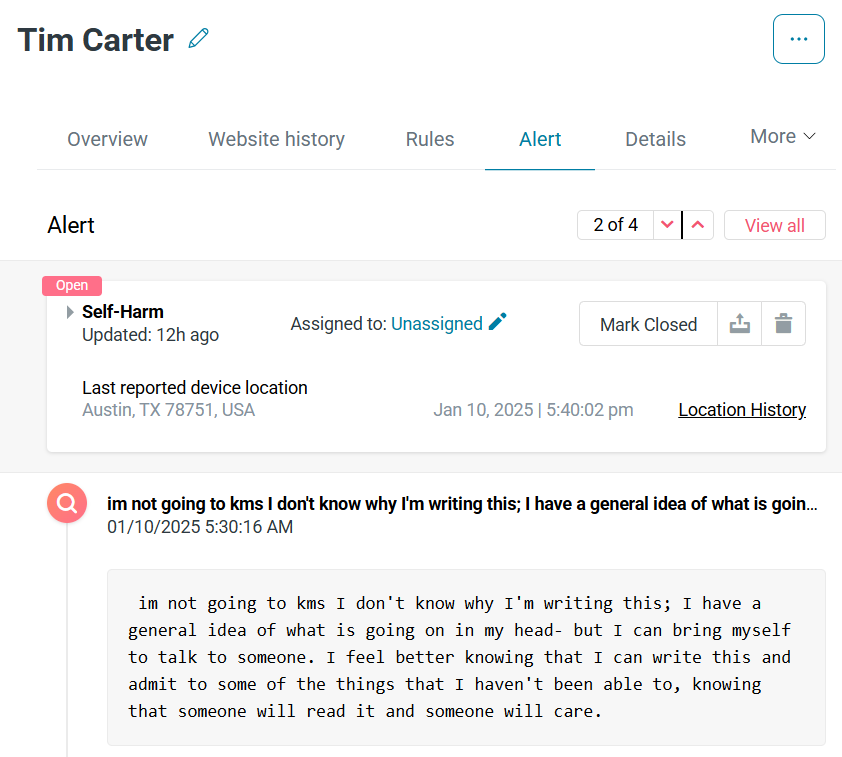At Portage Central High School, student safety alerts have done more than catch concerning behavior—they’ve surfaced silent struggles no one saw coming.
One such moment came when a Lightspeed alert flagged a Google Doc where a student was expressing deep anxieties around body image. A follow-up review of search history revealed patterns of concern, including related topics. It was the first time anyone—school staff or family—realized just how much the student was carrying. “Smart, kind, reserved. We never would’ve guessed something was wrong,” said Principal Eric Alburtus.
In another case, the signs were even more urgent. A student typed: “I feel so hopeless maybe I should’ve told my therapist I want to die.” The words appeared on a school-issued device and triggered an immediate review. The timing was everything. “We were already working with that student on other concerns,” Alburtus recalled. “But we didn’t know they were suicidal. Had we not received that message when we did—we could have lost a student that day.”
The school’s response isn’t rooted in discipline. Even when two students were caught exchanging cruel messages over Google Chat—language that would have led to in-school suspension if said aloud—staff chose a different path. “We’ve made a deliberate choice not to treat alerts as disciplinary,” Alburtus said. “We want students to feel safe talking to us. That matters more than punishment.”
Portage ensures every alert is treated with care and urgency. Notifications are routed to appropriate personnel, including building leaders, district staff, and school police. Alburtus and his assistant principals review them throughout the day—responding directly, contacting families, and ensuring students aren’t left alone in moments of need.
For Alburtus and his team, Lightspeed isn’t just about technology—it’s a tool that supports real human work. “This only works because we’re choosing to show up for kids. Every single time.”


